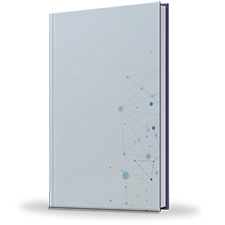The study on the Feed non-protein nitrogen market offers insights, information, and recommendation to market stakeholders and investors to help them prioritize and formulate strategic decisions. The report includes Feed non-protein nitrogen market across more than 15 countries. The study is analyzed on the basis of rigorous research methodology, which covers extensive desk research using qualitative analysis, quantitative/statistical methods, and primary interviews.
The study analyzes the market scope, revenue size, and growth of the global Feed non-protein nitrogen market and monitors the prime trends at the regional level. In addition, it covers qualitative analysis on the basis of several parameters, including impact on market size, economic impact, regulatory framework, opportunity window, and key player strategies. The report includes a section on the company profile that covers the company overview, company snapshot, key executives, product/service portfolio, operating business segments, business performance, R&D expenditure, and key strategic moves & developments. The global Feed non-protein nitrogen market is categorized on the basis of type, form, livestock. On the basis of region, the market is studied across North America (the U.S., Canada, and Mexico), Europe (the UK, Germany, France, Spain, Italy, and rest of Europe), Asia-Pacific (China, India, Japan, South Korea, Australia, and rest of Asia-Pacific), and LAMEA (Latin America, the Middle East, and Africa).
COVID-19 Impact Analysis
The outbreak of COVID-19 has had a severe impact on the global economy and social development. The report includes micro- and macro-economic analyses along with qualitative analysis of the COVID-19 impact on the Feed non-protein nitrogen market. In addition, the report highlights the market size and share that reflects the COVID-19 impact on the Feed non-protein nitrogen market in 2023 and the subsequent years. Moreover, the report offers the key strategies adopted by market players during such unprecedented times. Furthermore, the roll-out of vaccines and the decline in risk of infection are also expected to have an impact on the Feed non-protein nitrogen market growth. Therefore, the report provides post-COVID-19 impact analysis.
Deliverables:
- Market size value forecast by country
- Regional-level market trends and market dynamics
- Porter’s five forces model and PESTLE Analysis
- Company profile, competition landscape inclusive of heatmap analysis, competition dashboard, product/service offerings
- Major developmental strategies and M&A activities
- Country-wise market size and forecast for each segment
- Market share of leading players worldwide
Market Taxonomy
This report divides the global Feed non-protein nitrogen market on the basis of type, form, livestock. On the basis of region, the global Feed non-protein nitrogen market analyzed across North America; Europe; Asia-Pacific; and Latin America, the Middle East, and Africa.
Feed Non-Protein Nitrogen Market Report Highlights
| Aspects | Details |
| By Type |
|
| By Form |
|
| By Livestock |
|
| By Region |
|
Loading Table Of Content...



